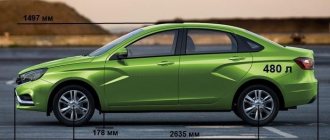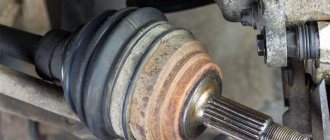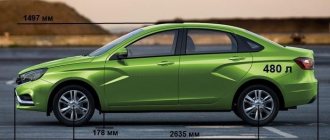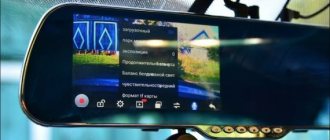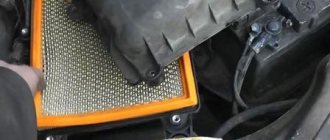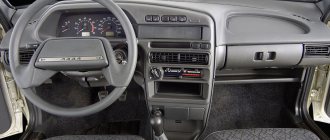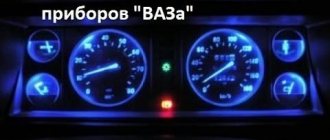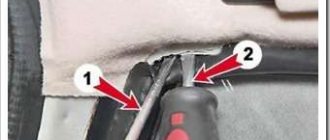How to properly configure the DVR yourself date and time
- Setting the setting language. We exhibit - Russian;
- Recording permission. Here you can configure, in addition to the resolution itself, the number of frames per second. The ideal option is Full HD 1920×1080 30p. In some cases, the manufacturer may recommend setting other indicators; Set the camera rotation. Here you can select the options rotation, top-bottom. With a standard camera installation, the “top-bottom” indicator is selected;
- Adjusting the length of the recording cycle. Most models have the ability to set time periods for one file from 1 to 45 minutes. For greater convenience, it is recommended to select a period of 5 minutes. In this case, after taking up all the space on the memory card, new segments will be recorded over the oldest recordings;
- Be sure to turn on the time function. This may be necessary if there is a need to dispute with the insurance company or another participant in the accident in court. Find the time tab, usually there is a “time stamp” mode. It should be switched to the ON position. Next, set the date and time. Some models allow you to synchronize time via satellite;
- The light frequency allows you to adjust the lighting flicker filter. In our country, lighting is used with a frequency of 50Hz, we set this value;
- Auto-record. This function allows you to turn on the camera when moving within the field of view of the sensors. This way you can control what is happening to your car while it is parked. Don't forget to set the shutdown time. It is recommended to do 30 seconds after the end of the object's movement;
- Setting up a GPS receiver. This allows you to display movement speed and coordinates on video. Please note that not all DVRs have this capability;
- Setting up the G-sensor. This is necessary to protect the recording in case of an accident or when driving on bumpy roads. When driving on poor surfaces, it is recommended to disable the function completely;
- For use in winter, it is advisable to delay the start time by 10-20 seconds. This will allow the camera to turn on only after a certain period of time after the engine starts. The function is also useful in case of ignition problems;
- Setting the exposure. It is better to choose automatic;
- We set the contrast to the “normal” position, and also do the same with sharpness and brightness;
- Day and night exposure. Automatic mode is suitable for daytime operation. Night exposure can be turned off.
- If you leave it on, the camera will independently select the exposure mode depending on the time of day.
AutoFlit.ru
Motion Sensor
The module provides a useful option in the recorder. The recording starts after activating the function and records movement in the camera’s field of view, and when a trip begins, the device is triggered automatically. Manual activation mode involves starting the camera when the driver presses a button. Forgetfulness often causes you to miss important moments while moving.
The DVR settings to automatically turn on the sensor allow you to record events around the car while it is parked. The sensor is triggered at the beginning of the movement and reveals the identity of the criminal in the recording. The device turns off in quiet mode, saving battery power and memory space. The sensitivity of the module is set in the range 1-8, the optimal value is 3.
Review of car DVR DNS EV-200 tests
Classification of memory cards
The appearance on the market of video recording products combined with positioning devices is due to the fact that in some cases, in order to fully prove innocence, traffic police officers need to provide not only a visual display of events, but also data on the vehicle’s own speed. The GPS module supplements video information with accurate movement data (vehicle speed, its coordinates, route display on maps).
The DNS EV-200 car video recorder is equipped with a GPS function and allows you to record speed and coordinates and synchronize this data with video. The GPS module is not located in the gadget itself, but in the holder. This allowed manufacturers to expand the functionality of the device without increasing its size. The DVR is connected to the module using a special cable.
Software that allows you to combine video with GPS data is included with the gadget. The video sequence is accompanied by the display of a map section with the ability to change the scale, as well as a graphic image of the vehicle speed.
The DVR allows various recording modes, characterized by different resolutions and speeds. The maximum resolution at a speed of 30 frames/second corresponds to the FullHD format. The ability to activate the appropriate video recording mode is provided to the user and is carried out by selecting the desired item in the settings menu.
The picture quality allows you to see its smallest details, even in low light. In the daytime, it is possible to identify, for example, car registration plates from a distance of several tens of meters. To ensure optimal recording conditions at night, the DNS EV-200 DVR has four infrared spotlights.
The device's camera has an increased viewing angle; the manufacturer claims this parameter is equal to 170°. The almost-full angle allows you to monitor changes in the situation not in a narrow sector, like with conventional DVRs, but throughout the entire space in front of the car. The video quality at the edges of the picture is a little worse, but it is quite enough to recognize details.
The lens focuses automatically, and everything that at first glance is intended for manual adjustment in the device is nothing more than decoration.
In parallel with image recording, audio recording is carried out thanks to the built-in microphone. The sensitivity of the microphone allows you to record, for example, communication with traffic police representatives.
Video recording is cyclical and produced in small files. When the memory resource is full, the oldest fragments are deleted and new ones are written in their place. Video files obtained when the G-sensor is triggered are protected from overwriting.
To store all information, the device uses an external storage device (microSD memory card) with a capacity of up to 32 GB. Such a large memory card resource allows you to save several hours of video and a corresponding amount of GPS information.
The liquid crystal screen located on the front side of the DNS EV-200 registrar is small in size (screen diagonal is 2.7 inches). This is quite enough for the initial acquaintance with the recorded video. A more detailed study of the recording with identification of small parts is best done on a computer or TV. For this purpose, the design of the gadget provides appropriate connectors, and the delivery set includes special connecting cables. It is possible to view the video directly from a memory card via a computer or laptop.
An example of a photo taken during the day in the sun, on a cloudy day and at night.
The autonomous operation of the DVR, due to the small capacity of the battery, does not exceed 30 minutes. This is one of the weakest indicators among similar devices. Uninterruptible power supply is provided from the vehicle's on-board network through the cigarette lighter.
Drivers will no doubt appreciate the ease with which the DVR can be removed from the holder. This quality of the gadget will be useful for those who often leave the car and do not want to leave the DVR in sight.
An example of a daytime DVR video.
Night photography in low light
ravid.ru
Exposure metering mechanism
Error e05 for Canon mp250 mp280 printer reset e05
Depending on the set mode, the exposure meter measures exposure and transmits the received data to the camera processor. The processor analyzes the information and exposes the image using software algorithms.
Modes for measuring the brightness of an object in digital cameras are selected either by the photographer during manual control, or by the camera microprocessor during autoexposure.
Automation provides satisfactory image quality in most cases, however, to obtain photographs of a high artistic level, you need to know and understand what exposure metering is and how to use it in practice.
There are several types of exposure metering:
- Spot metering - In this case, exposure metering is carried out on a limited area of the frame (1-5% of the entire image), usually in the center. The brightness of other areas is not taken into account. Thanks to this, the measurement accuracy in the selected area is very high, which ensures its correct exposure. Typically used for photographing a single subject against a uniform, darkened background, when it is required to obtain a clear, high-contrast image. Complex mode used by professionals.
- Center-weighted (average) metering - Metering is carried out within the central area of the frame, limited by the viewfinder markers. The measurement area ranges from 60% to 80% depending on the camera model. This mode ensures optimal use of the most sensitive areas of the matrix, since the ISO of the photo scanner gradually decreases from the center to the edges. The mode is ideal for portrait and reportage photography.
- Partial measurement - Not available on all cameras. This is a mode in which the area of the frame on which the metering is performed (10-15%) is larger than with spot metering, but smaller than with center-weighted metering. It is used when it is necessary to photograph an object, ignoring excessive brightness or, conversely, strong shading of the edges of the frame. In this mode, the detail of the image can suffer greatly (especially at the edges).
- Matrix (multi-zone) measurement - The most common measurement method, which is installed by default in the automatic modes of most cameras. It consists in the fact that the frame is divided into several zones, in each of which the illumination is measured. Then the processor brings all the data together, calculates the average illumination value and, based on it, selects the exposure. In most cases, it provides good image quality, but in difficult lighting conditions it can lead to exposure errors. Suitable for beginners at the beginning of their acquaintance with photography.
Setting the time and date of the mirror DVR
Many mirror recorder models come with standard VMS software. It allows you to quickly and easily set the date on your camcorder. To do this, go to the VMS program menu and click on the OK button. This allows you to put the recorder into standby mode.
After this, press the W symbol and enter the settings menu of the DVR program in standby mode. Using the directional arrows, select the appropriate parameters to enter:
- Numbers;
- months;
- of the year.
Similar Setting the exposure of a DVR is the most important condition for its high-quality operation
The same procedure is carried out when setting the time on this device. To do this, you also need to put the recorder into standby mode and press the W button. Then enter the menu and use the arrows to set the desired time. After this, press the key with the W symbol again and exit this operating mode. The final phase of setting the time and date is again also the OK button. When you click on it, the program minimizes and saves the set time to the DVR.
If your mirror DVR runs on Android software, then we set the date and time by copying the actions on the smartphone.
- Click to enter “Settings” (usually a gear icon)
- Find the line “Date and time”
- Enter the required parameters
- Save and exit the menu.
Summer time
Many models of such devices have a daylight saving time function. It is translated automatically according to a given algorithm. The real-time registration factor for a specific region plays an important role in the case of recording various road accidents. This should be taken into account in order to avoid further confusion and misunderstandings in determining the time of the accident.
Settings failed
Modern video equipment is highly accurate and reliable. Due to some reasons, their software may sometimes crash. In this case, the date and time on the recorder mirror will not be displayed correctly. To avoid this, you should follow some rules:
- Fix the device firmly;
- periodically check the settings;
- correct all changes.
It is not recommended to purchase simple and cheap recorder models. Typically, such models are not reliable and often malfunction. Every day you need to check the compliance of the time and date on the device and, if they change, adjust it in the right perspective. Reflashing the DVR programs increases its reliability and increases its service life.
Myth 1
Recovering Canon Memory Card Data
If the recorder box says Full HD, this automatically means that you have a portable video camera with an excellent picture in your cabin.
This is wrong. Or rather, not quite like that. This is true for well-known manufacturers and brands. But the valiant “Kulibins” from the Middle Kingdom long ago mastered a wonderful technology called “interpolation”. What does it mean? Only that, in fact, the image in such recorders has a low resolution, and high resolution (HD and Full HD) is obtained by simply stretching the image. Which, naturally, will not be reflected in the best way in terms of quality. The simplest solution is to watch videos on YouTube with an example recording of the model you are interested in before purchasing. Here is an example of shooting Highscreen Black Box Radar plus, obviously with “honest” 1080p.
Review of car DVR and GPS navigator DNS GSV1
The high class of the device is confirmed by the capabilities that this gadget has:
- The Android 4.0.4 operating system allows you to install additional software and enjoy numerous entertainment options.
- Video recording quality – FullHD.
- The screen size (4 inches diagonally) is not a very outstanding characteristic for a navigator. However, for a DVR such a screen is more of an exception than a common feature.
- The presence of a GPS module significantly expands the capabilities of the DVR, adding information to video recording. The user can track the entire route on GoogleMaps and see spatial and speed characteristics at any time.
- Simultaneous operation of the DVR and navigator is allowed. In this case, navigation information is displayed on the screen while video recording occurs in the background.
2GIS is used as a pre-installed navigation program with a detailed display of most populated areas of the Russian Federation. If desired, the user can install other navigation software, either instead of 2GIS or in parallel with it.
All control of the gadget’s capabilities and selection of the necessary functions occurs through the LCD touch screen. It also allows you to view navigation information, captured video files, and multimedia files. The screen resolution of 800×480 pixels allows for comfortable viewing with the ability to detail the picture.
What may cause inconvenience for the driver is the fact that the screen does not allow horizontal rotation, so it may be difficult to adjust for comfortable viewing. Minor rotation is possible only in the vertical plane.
The sound accompaniment of the positioning system is provided using the built-in speaker.
The GPS module, which communicates with satellites, is located in the device mounting bracket. Thanks to this, the DNS GSV1 is small in size and lightweight.
As a DVR, the device has the ability to shoot in FullHD format (1920×1080 pixels at a recording speed of 30 frames per second). The choice of video resolution is left to the user and is carried out from the main menu of the gadget.
Video recording is carried out in cyclic mode, that is, when the memory resource is full, old fragments are deleted and new ones are recorded in this place. The duration of recorded files can be from 1 to 5 minutes according to the user's choice. Video recording is carried out in MP4 format.
This device does not support photography.
The device’s camera based on a CMOS matrix (2 MP, 1/2.7″) allows you to shoot high-quality video in any conditions. Even in the absence of additional illumination, the quality of night photography (or shooting in low light) is quite satisfactory.
The gadget does not have built-in memory, so video is saved to external media (micro SDHC memory cards with a capacity of up to 32 GB).
The DNS GSV1 has two slots for memory cards, allowing two modes of their use:
- Both memory cards are used to store captured video. In this mode, the user has access to a large memory resource, but multimedia capabilities and the use of other navigation programs are not available.
- One memory card is used for recorded video, the second for multimedia files and navigation software. In this case, the data on the second card is protected from possible recording and destruction.
To view the recorded video in detail, the gadget has the ability to connect to external devices. For this purpose, its design provides HDMI and USB connectors.
Unfortunately, manufacturers did not provide the ability to use all the resources of Android 4.0.4. First of all, we mean communication capabilities - Internet access is not provided.
An example of video shooting during the day.
An example of night photography.
ravid.ru
What is loop recording in a car DVR?
Car recorders usually support two video recording modes: continuous and cyclic. Continuous mode allows you to record video in one large file. This size can only be limited by the available memory of the device (internal or external). When the free memory is full, continuous video recording ends.
The advantage of this type of video recording is the absence of gaps in the video even for short periods of time. The obvious disadvantage of continuous recording is that it stops when the memory is full. In some cases, the driver is even deprived of the opportunity to quickly reconfigure the DVR to continue filming.
Against this background, the cyclic video recording mode looks much more functional. It has two significant features:
- Recording is carried out not as a continuous file, but in fragments that are small in volume and duration.
- As soon as the device’s memory is full, the oldest (by recording time) files begin to be deleted. A new video is recorded in the free space, and the whole cycle is repeated again.
The cyclic video recording method also has its positive and negative sides. The positive aspects include the independence of the fact of shooting from the availability of free space in memory. Video recording will be carried out in any case, even if the memory is full.
A negative aspect of cyclic recording is the inability to save videos of long duration and volume. Only the most recent small files will be saved.
Some DVRs (especially older models) are not able to provide continuous video when recording cyclically. This refers to gaps in the picture at the junctions of fragments adjacent in time to recording. Modern DVRs, as a rule, do not have this drawback. Fragments are recorded in such a way that the recording of each subsequent file begins when the recording of the previous one has not yet finished. It is this overlay of video files that ensures that there are no gaps.
The duration of fragments during cyclic recording, as a rule, does not exceed ten minutes. There are no standard values for the duration of video fragments, and each recorder manufacturer sets them independently. Setting the time during which one fragment will be recorded occurs in the DVR settings. The user can choose the duration that he deems necessary.
Operating the DVR in cyclic recording mode allows you to implement another important and useful function for safety. We are talking about protecting video files from being destroyed or overwritten as a result of the operation of the G-sensor (or shock sensor). This sensor monitors the position of the vehicle in space and the smoothness of its movement. With any sudden changes in these parameters, the sensor marks the video files that are being filmed at the moment, thereby protecting them from possible destruction. The driver does not have to worry about the safety of video files and at the same time he has full access to them.
When saving fragments in the DVR memory, they are assigned names containing numerals in the order in which they were recorded. This ensures a quick search for the desired location in the video if you need to watch it.
The cyclic recording method is most popular among car owners. It provides uninterrupted recording of events into memory of any size. In addition, the safety of video files received in emergency traffic situations is ensured.
In this video you will see a live example of this function on the device.
ravid.ru
Operating instructions for the Full HD 1080p DVR. Briefly about the main thing
- DVR;
- Car holder with suction cup;
- USB-AV cable;
- HDMI cable;
- Charger (12-24 V);
- In addition, a 4 GB flash drive may be included.
- Permission. The higher this indicator, the higher quality the recording will be. It is not recommended to use maximum quality with a small memory card installed;
- Date and time, timestamp;
- Recording cyclicity. It is usually recommended to divide files by 5 minutes;
- Scenario. Here you select the shooting mode. It is best to select "auto". In this case, the recorder will independently select the appropriate mode, depending on the lighting;
- Show coordinates. This will allow you to prove, if necessary, that you were in exactly that place.
AutoFlit.ru
Settings
Let's look at the main stages of adjusting the recorder. Please note that the names may differ for some models. Also, the following functions are not found everywhere:
- Setting the setting language. We exhibit - Russian;
- Recording permission. Here you can configure, in addition to the resolution itself, the number of frames per second. The ideal option is Full HD 1920×1080 30p. In some cases, the manufacturer may recommend setting other indicators; Set the camera rotation. Here you can select the options rotation, top-bottom. With a standard camera installation, the “top-bottom” indicator is selected;
- Adjusting the length of the recording cycle. Most models have the ability to set time periods for one file from 1 to 45 minutes. For greater convenience, it is recommended to select a period of 5 minutes. In this case, after taking up all the space on the memory card, new segments will be recorded over the oldest recordings;
- Be sure to turn on the time function. This may be necessary if there is a need to dispute with the insurance company or another participant in the accident in court. Find the time tab, usually there is a “time stamp” mode. It should be switched to the ON position. Next, set the date and time. Some models allow you to synchronize time via satellite;
- The light frequency allows you to adjust the lighting flicker filter. In our country, lighting is used with a frequency of 50Hz, we set this value;
- Auto-record. This function allows you to turn on the camera when moving within the field of view of the sensors. This way you can control what is happening to your car while it is parked. Don't forget to set the shutdown time. It is recommended to do 30 seconds after the end of the object's movement;
- Setting up a GPS receiver. This allows you to display movement speed and coordinates on video. Please note that not all DVRs have this capability;
Setting up the G-sensor. This is necessary to protect the recording in case of an accident or when driving on bumpy roads. When driving on poor surfaces, it is recommended to disable the function completely; For use in winter, it is advisable to delay the start time by 10-20 seconds. This will allow the camera to turn on only after a certain period of time after the engine starts. The function is also useful in case of ignition problems; Setting the exposure. It is better to choose automatic; We set the contrast to the “normal” position, and also do the same with sharpness and brightness; Day and night exposure. Automatic mode is suitable for daytime operation. Night exposure can be turned off. If you leave it on, the camera will independently select the exposure mode depending on the time of day.
Important setting in car DVR Exposure
One of the most important settings on a car DVR that allows you to get a high-quality picture is exposure. Incorrect exposure can ruin video frames, regardless of the ambient lighting conditions in which they were taken. The video may be darkened or, on the contrary, overexposed; problems may appear both throughout the entire frame and in a separate section of it, and so on.
What is exposure in a DVR, and how does it affect video quality? Exposure is a setting that allows you to change the amount of light that falls on the camera matrix and actually forms an image on it.
In clear sunny weather, a lot of light enters the camera lens, and if the amount of this light is not reduced, the picture will most likely be too light, even faded. At night, unadjusted exposure will result in overly dark frames. There are several ways in which you can adjust the flow of light.
- Changing the amount of time light is exposed to the camera sensor. This is the so-called shutter speed, that is, the time during which the electronic shutter of the DVR camera is open to form one video frame. It is clear that the less time the shutter is open, the less light will fall on the matrix and vice versa. Therefore, the brighter it is outside when shooting, the shorter the shutter speed should be.
- Changing the size of the aperture, that is, the gap in the lens through which the light flux hits the matrix. A larger aperture also provides more light passing through the camera lens.
As a rule, in car video recorders, exposure adjustment does not imply separate adjustment of shutter speed and aperture. The exposure itself is adjusted, and the parameters of both shutter speed and aperture change accordingly. The exposure level can vary from the minimum value, which is recommended to be set in sunny weather, to the maximum value, used in low light conditions.
An important factor affecting video quality is the characteristics of the camera matrix on which the image is formed. These are its dimensions, number of pixels, sensitivity to light flux. Naturally, these parameters cannot be adjusted during operation of the DVR; each matrix has its own characteristics.
High-quality matrices from well-known manufacturers have high sensitivity and consist of a large number of dots (pixels). This ensures the possibility of high-quality shooting in any conditions, both in low and excessive lighting.
Recently, some models of DVRs are equipped with the WDR function, which does not directly affect exposure, but improves video quality by changing the exposure time when shooting one frame. When the WDR function is activated, the DVR makes two copies of each individual recording frame: one version of the frame with a short shutter speed, the second version with a long shutter speed. In the final video, both of these options are combined, and the resulting picture will be practically devoid of the shortcomings of individual frames.
Setting the exposure is very important to get truly high-quality video. The driver should make the necessary changes to its adjustment for any changes in external lighting. It is quite possible that to obtain high-quality video you will have to experiment with exposure settings for a particular DVR.
Changing the exposure on the recorder.
https://youtube.com/watch?v=GMrmYUJWWhM
ravid.ru
How to Adjust DVR Exposure
We figured out what exposure is in a DVR, and now let’s talk about how to configure the gadget correctly. To do this, there are several ways to adjust the light flow and obtain high-quality video recording.
- Provide a change in the time of exposure to light on the camera matrix, or, more simply, shutter speed. In an extended version, this sounds like setting the time for an open DVR, during which each individual frame of the video sequence is formed. Dark means a longer shutter speed, light means a shorter shutter speed.
- Provide a change in the aperture or diameter of the lumen through which the light flow hits the matrix. Naturally, its size affects the amount of this flow. Therefore, keep in mind that aperture settings change when adjusting the exposure itself.
- Video quality largely depends on the parameters of the matrix - its size, number of pixels and sensitivity to light. These parameters are not regulated in the DVR, but are selected according to individual characteristics along with it. For example, modern models have appeared with the WDR function, which shoots each frame at different shutter speeds and ensures video quality.
Similar How to set up a DVR yourself
In any case, the driver must remember and make changes to the exposure adjustment when the external light intensity changes. And here it will not be possible to achieve high-quality video right away, and this is natural. Therefore, it is necessary to experiment, spare no effort and time, so as not to later regret the poor-quality recording from your DVR.
If you want to buy an AutoPASS E6 radar detector, see the model review
The AutoPASS E6 radar detector is an inexpensive Chinese radar detector, its cost is about 20 dollars. At this price, the device has all the standard functionality: it catches in all ranges used in Russia: X, K, Ka, the scale is expanded due to the Ku frequency, which is exotic for our country. To prevent the processor from being overworked, it is better to immediately turn off everything that is not in use. In addition, the detector responds to short shots from Ultra-X, Ultra-K and POR radars. To prevent vigilant highway patrol officers from detecting the presence of this device in your car, it is protected from VG-2 and Specter scanners and direction finders. This must be taken into account when traveling abroad.
What we can thank the Chinese engineers for is the use of a particularly sensitive VCO waveguide, which ensures good reception of all systems. However, according to reviews, the device reacts to everything, and even switching from Highway to City mode does not help. It is also noted that frequencies are not always displayed correctly on the LED display, which may result in another fine.
The Chinese were not pleased with the high-quality laser receiver; the optical lens covers only half a circle of 180 degrees in the direction of movement, and radar lasers hitting the back will not be detected. But nevertheless, the reception range outside the city is more than two kilometers; in the city limits this value decreases.
Additional functions include four-level adjustment of display brightness and signal volume, which will definitely come in handy in a city where there are a lot of false positives. The device is attached with a suction cup to the glass or with Velcro to the dashboard. Do not forget about its correct installation, so that the road is visible to the lens and horn antenna, and there are no foreign objects between the radar detector and the glass.
This device is one of a kind: at a low cost it has good characteristics, although in the city it will constantly disturb you on business and idle time. We can recommend it to novice drivers who adhere to the rules and rarely exceed the speed limit.
If you like fast driving on city highways, then it is better to buy some more expensive analogue. With a high-speed driving style, it will pay for itself in a few days.
ravid.ru
Myth 6
If the registrar captured any incident, the filming will become direct evidence in court.
And again, this is only partly true. To begin with, it is desirable that the shooting be carried out at a frequency of at least 30 frames per second. Otherwise, the result is a video with noticeable jerks, which maximizes the likelihood of refusal to attach the video to the case
You should always check that the date and time set are correct; inspectors pay attention to this first. At the scene of the accident, it is advisable to have your watch, the latest issue of a magazine, or other information that will serve as authoritative confirmation of the time of the incident in the frame.
What is a DVR and how to use it
A video recorder, or DVR (Digital Video Recorder), is a special device for recording what is happening on the road from a car while driving or just in a parking lot; it is also possible to record interior footage of the interior if there is a second camera.
DVRs have a lot of advantageous characteristics:
- the video scanning method allows you to obtain high-quality recording by dividing it into frames or half-frames, depending on its type: progressive or interlaced;
- the bitrate ranges from 8 to 20 Mb/s, which has a positive effect on the image, but the higher the bitrate, the more space the video takes up;
- most DVRs have a fairly large viewing angle, up to 110 degrees, thanks to this you can get video with a “wider” view of what is happening;
- a large number of different video file compression formats, thanks to which their quality does not deteriorate, and the files themselves are quite small in size;
- high frame rate - from 15 to 60 frames per second, thus it is possible to photograph various incidents in more detail;
- different types of resolution, depending on price and characteristics, so everyone can find a suitable option, naturally: lower price - lower resolution;
- image stabilization when the car is moving allows you to shoot “shaky-free” videos;
- sensitivity even at night - especially for shooting during night trips on poorly lit roads.
The main function that a video recorder performs is to record road accidents or any incidents with a car to collect evidence. It is very useful for any motorist, because with its help he will be able to:
- prove your non-involvement in some event;
- provide evidence of innocence in a controversial accident;
- protect your car from robbery;
- By connecting online, you can monitor the situation live.
Similar Which memory card is better to buy for a DVR - tips for choosing

